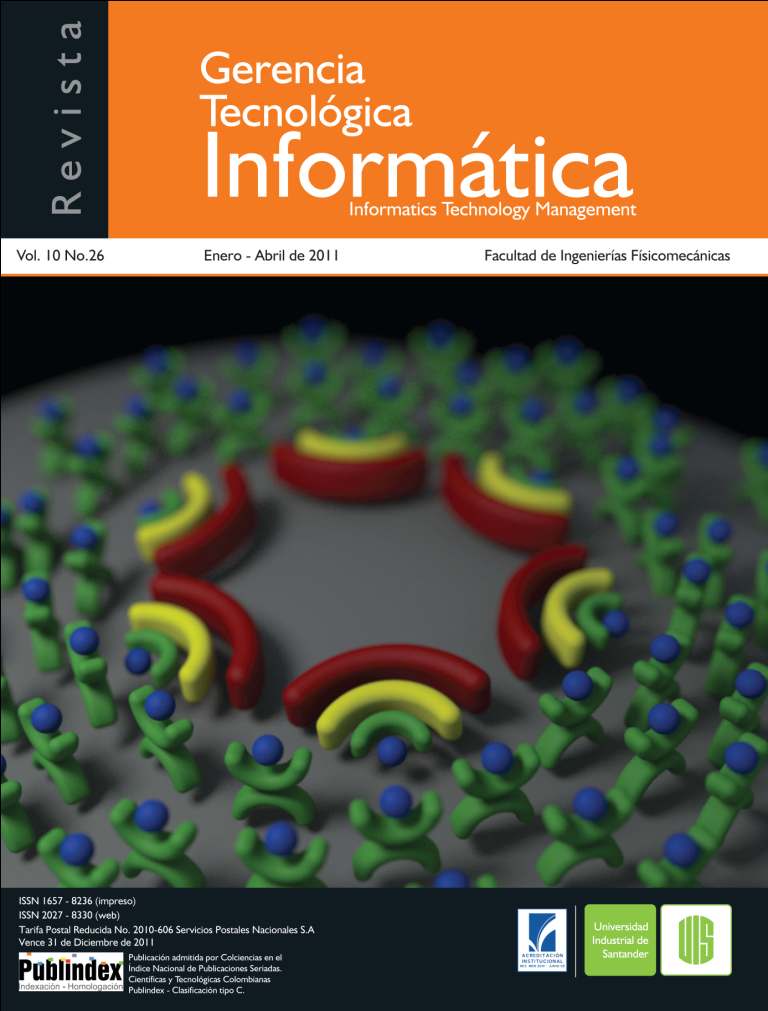IMPLEMENTACIÓN DE UN SISTEMA DE TELEMETRÍA PARA LA DETECCIÓN TEMPRANA DE EVENTOS TSUNAMIGÉNICOS ASOCIADOS CON LA VARIACIÓN EXTREMA DEL NIVEL DE LA MAREA EN LA COSTA PACÍFICA COLOMBIANA.
Publicado 2011-10-20
Cómo citar
Resumen
El presente trabajo describe la implementación de un sistema de alerta temprana de tsunami teniendo en cuenta la variación extrema del nivel de la marea, para lo cual se utilizo un sensor oceanográfico de presión (SBE-50) que adquiere datos correspondientes al nivel del mar in situ; tales datos se transmiten punto a punto vía inalámbrica hacia una estación receptora para que finalmente los datos recibidos sean procesados y visualizados en tiempo cuasi real a través del software Tsunami Detect el cual predice y compara el nivel de marea basado en el cálculo de la marea astronómica. El suministro energético del sistema se logra a través de baterías y paneles solares, permitiendo monitorear diferentes puntos de la bahía de Tumaco (Colombia) teniendo en cuenta la vulnerabilidad que presenta esta zona geográfica del pacifico ante la presencia de un evento tsunamigénico. Pruebas iniciales y cálculos realizados demuestran que el sistema está en capacidad de transmitir los datos del sensor hasta una distancia de 3,78 km en configuración punto a punto con línea de vista directa y funcionando en la banda UHF haciendo uso de un bajo consumo de energía y garantizando un periodo de autonomía hasta de 3 días en condiciones de baja radiación solar.
PALABRAS CLAVES: Nivel de Marea, Detectar Tsunami, Marea Astronomica.
ABSTRACT
This paper describes the implementation of a communications system of low cost for early detection of extreme tide level variation in the Colombian Pacific Coast. A pressure sensor acquires data of tide level in situ. These data are transmitted wirelessly through of an antenna system to a receiver station such are processed and displayed in near real time through of a Tsunami Detect software which predicts and compares the tide level based on the calculation of the astronomical tide. The energy supply system is achieved through batteries and solar panels which can monitor different parts of Tumaco bay (Colombia), taking into account the vulnerabilities of this area of the Pacific in the presence of a tsunami. Initial tests and calculations show that the system is capable of transmitting sensor data to a distance of 3.78 km for point - to – point links with line - of - sight and operating in the UHF band using a low power consumption and ensuring a period of autonomy up to 3 days under conditions of low solar radiation.
KEYWORDS: Tide level, Tsunami Detect, Astronomical Tide.
Descargas
Referencias
- [I] STEWART, Robert. Introduction To Physical Oceanography. Department of Oceanography. Texas University, 2002.
- [II] MULLER, P. The Equations of Oceanic Motions. University of Hawaii: Cambridge University Press, 2006.
- [III] SATAKE, Kenji. Tsunamis. Case Studies and Recent Developments. Dordrecht, Holanda: Springer, 2005.
- [IV] Dirección General Marítima. Centro Control Contaminación del Pacifico.”Impacto del Tsunami sobre el litoral pacífico colombiano”. Disponible en: http://www.cccp.org.co/modules
- [V] Mapa de Radiación Solar para el Territorio Colombiano. Disponible en: http://www.ideam.gov.co/files/atlas/mapas%20 jpg/radiacion.jpg
- [VI] Manual técnico del sensor oceanográfico de presión SEABIRD SBE-50. Disponible en: http://www.seabird.com/pdf_documents/ manuals/50_008.pdf
- [VII] Manual técnico del radio modem spread spectrum MHX 910A. Disponible en: http://www.microhardcorp.com/brochures
- [VIII]TSE, D. VISWANATH, P. Fundamentals of wireless Communication. New York: Cambridge University Press, 2005.
- [IX] Radio Mobile, Freeware by VE2DBE V7.6.9.Disponible en: http://www.cplus.org/rmw/english1.html
- [X] BOON, J. Secrets of the tide. Chichester, UK: Horwood Publishing, 2004. [XI] MIDDLETON, Gerard. Data analysis in the earth sciences using Matlab. Prentice Hall, 2000.
- [XII] DEAN,Robert. DALRYMPLE Robert. Water wave mechanics for engineers and scientists. Prentice Hall, 1996.
- [XIII]BLOOMFIELD, P. Fourier analysis of time series. An introduction. John Wiley & Sons, 2000.
